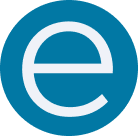
epocrates
Will growth in neurological medical devices advance diagnostic and treatment options?
May 25, 2023

The Neurosurgery Devices and Equipment Global Market Report 2023 predicts that the global neurology devices and equipment market will grow from $7.17 billion in 2022 to $8.12 billion in 2023 at a compound annual growth rate of 13.2% and will exceed $12 billion in 2027. These projections not only highlight the significant value these technologies bring to the healthcare industry at large, but also the global prevalence and disease burden of neurological disorders.
In 2019, the Global Burden of Disorders Study Group found that neurological conditions resulted in more than 276 million disability-adjusted life years, or healthy years of life lost due to disability. Neurological disorders were also identified as the second leading cause of death. (GBD 2016 Neurology Collaborators, 2019). As the global population ages, the prevalence of neurological conditions, particularly among adult populations, is expected to increase steadily, further underscoring the need to develop effective neurosurgery devices and equipment used to diagnose, prevent, and treat nervous system disorders.
How is the neurological medical devices market expected to grow?
In 2022, North America reported the largest growth in the neurosurgery devices and equipment market, with Asia Pacific coming in a close second. This year, the North American market will continue to take the lead as neurological disorders like stroke, Alzheimer’s, epilepsy, traumatic brain injury, Parkinson’s disease and brain tumors continue to affect adult populations. Not surprisingly, as the aging population 65 and older continues to increase, so too will brain disorders like Alzheimer’s, which is expected to grow from 6.2 million in 2021 to 13.8 million by 2060.
While the FDA's approval process for medical devices is stringent, with only 31% clearing the agency's premarket submission process and 69% being rejected, on average, several notable companies like Abbott, Boston Scientific Corporation, Integra LifeSciences, Medtronic, Stryker, and Penumbra, Inc., among several others, are stepping up to the plate to develop neurosurgery devices in the following critical areas:
- Minimally invasive surgical procedures and approaches designed to provide shorter recovery times, less pain, and less scarring than traditional open surgeries, while increasing surgeon mobility and reducing equipment costs.
- Neuroendoscopy, a minimally invasive, advanced endoscope-assisted neurosurgical procedure used to treat vascular diseases and remove tumors, among management of other disorders
Endoscope-assisted technology is of particular interest to neurosurgery device manufacturers looking to provide more advanced and efficient options for minimally invasive surgeries and operating procedures. This interest is driven by the recent advent of state-of-the-art, specialized neurosurgical instruments, many of which are currently in use at places like New York-Presbyterian Hospital/Columbia University Medical Center. Lauded for their ease of handling, precision and surgical accuracy, devices such as camera-assisted endoscopes, smartphones with endoscopes, computer-assisted navigation systems, and high-powered operating microscopes are growing in popularity.
Which devices have entered the market in 2023?
Though many neurological medical devices are at least a couple years away, many others have announced progress at various stages of development. To date, the FDA has cleared the following neurological devices and tools:
- Imperative Care – Zoom RDL, a radial access platform enabling mechanical thrombectomy for the treatment of ischemic stroke. (FDA approval granted on 1/4/23)
- Abbott – Prodigy, Proclaim, and Proclaim XR, Spinal Cord Stimulation Systems for the treatment of painful diabetic peripheral neuropathy. (FDA approval granted 2/26/23)
- Inspire Medical Systems – Inspire Upper Airway Stimulation, an implantable nerve stimulator used to treat obstructive sleep apnea. (FDA approval granted on 3/20/23)
- Biotronik NRO – Prospera Spinal Cord Stimulation System, an implantable spinal cord stimulation system for the treatment chronic, difficult-to-treat pain in the trunk or limbs. (FDA approval granted on 3/32/23)
References
The Business Research Company. (2023, January). Neurosurgery Devices and Equipment Global Market Report 2023. https://www.thebusinessresearchcompany.com/report/neurosurgery-devices-and-equipment-global-market-report
GBD 2016 Neurology Collaborators. (2019). Global, regional, and national burden of neurological disorders, 1990-2016: A systematic analysis for the Global Burden of Disease Study 2016. The Lancet. Neurology, 18(5), 459-480. https://www.thelancet.com/journals/laneur/article/PIIS1474-4422(18)30499-X/fulltext
U.S. Food & Drug Administration. (2018, February 9). Step 3: Pathway to approval. https://www.fda.gov/patients/device-development-process/step-3-pathway-approval
U.S. Food & Drug Administration. (2023, May 23). 2023 Device Approvals. Medical Devices Cleared or Approved by FDA in 2023. https://www.fda.gov/medical-devices/recently-approved-devices/2023-device-approvals

TRENDING THIS WEEK






